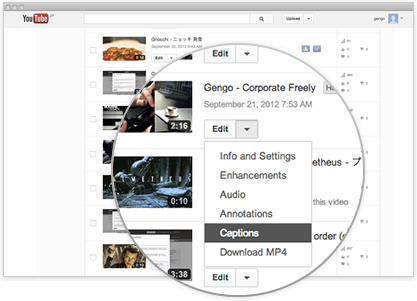This past week, YouTube provided answers to some questions regarding reach and algorithm insights here. Many content creators have been curious as to the different ways that they can maximize their reach and to gain more views on their videos. Below are some insights as to the most important details you should know about.
First, If a video is not performing well, updating the thumbnail will not improve performance. YouTube says that while thumbnails DO have an impact on clicks and engagement, the changing of a thumbnail will not cause the YouTube algorithm to magically show up more in viewers’ recommendations.
Next, a video’s click-through rate among your channel subscribers does not impact the likelihood of it being recommended. Basically, many content creators were curious if they needed to constantly remove inactive subscribers to prevent performance issues or not. YouTube says that the click-through rate among subscribers does not really impact the recommendation likelihood by much, since the recommendation system is usually focused on how well the video performs in the context that is shown. With this in mind, it is not necessary to try to remove inactive or old subscribers as YouTube will eventually just not show videos to people who are subscribed to a certain channel but have not clicked on any of that channel’s videos in a long time.

Example of YouTube’s click-through rate (CTR) metric and how it relates to YouTube recommendations.
Image from socialmediaexaminer.com
YouTube also provided some details about how their algorithm determines the order in which videos appear in relation to a search query. To put it into simple terms, YouTube’s search results are usually ranked by how relevant your title, description, and content match what the viewer was searching for, and how well your particular video has done since being uploaded, which can include the views, likes, comments, etc. This is very similar to how Google search results are sorted out, and this makes sense, as YouTube is owned by Google.
Many content creators were also confused as to why subscriber numbers were a relevant metric since YouTube does not show your videos to all subscribers. The reason why is because of how engaging the content will be for the viewers. YouTube ran an experiment where they compared the time spent on YouTube and views from prioritizing videos from subscriptions compared with videos that YouTube thought that viewers were more likely to watch, and there was a big difference. Basically, the end result was that prioritizing videos from subscriptions led to a huge drop in how often people came back to YouTube, and it meant that just because somebody is subscribed to a certain channel, it doesn’t mean that those are the videos that people want to see every time they come on to YouTube. Plus, YouTube offers a “subscriptions” tab that allows people to see the latest videos uploaded by channels that they are subscribed to already.
Choosing to upload several videos at once, but keeping some of them as ‘unpublished’ till you choose to activate them will not reduce your video reach. The only thing that matters is how your viewers will respond AFTER the video has been published. Thus, if you have videos that are unpublished and you don’t plan on publishing them until a little bit later, you don’t need to worry about a reduced video reach. However, if you do decide to upload more than three videos at one time, YouTube will only show notifications for the first three.
Uploading videos in two different languages may impact your content/channel performance. This can really depend on what kind of audience you have. Is your audience primarily multi-lingual? If so, then it would be best to keep all your content on the same channel. However, if your audience is made up of viewers who only speak English, for example, then it may be best to have one dedicated channel for English speakers and another channel for a different language.

YouTube also does offer a “captions” feature for users who speak other languages to understand what the video is talking about.
Image from gengo.com
Lastly, it does not take a certain amount of hours of watch time before a video is highly recommended. There could be a variety of different factors that could explain why a certain video is gaining lots of traction even though it was published so long ago. It could be that the topic or keyword is becoming very popular within the YouTube community, for example. YouTube says that it is fairly common for very old videos to suddenly gain a lot of popularity at a certain time in the future.
To find out more about this particular topic and notable updates around the digital marketing community, please check out Episode 34 of our latest “This Week In Marketing” podcast below!
